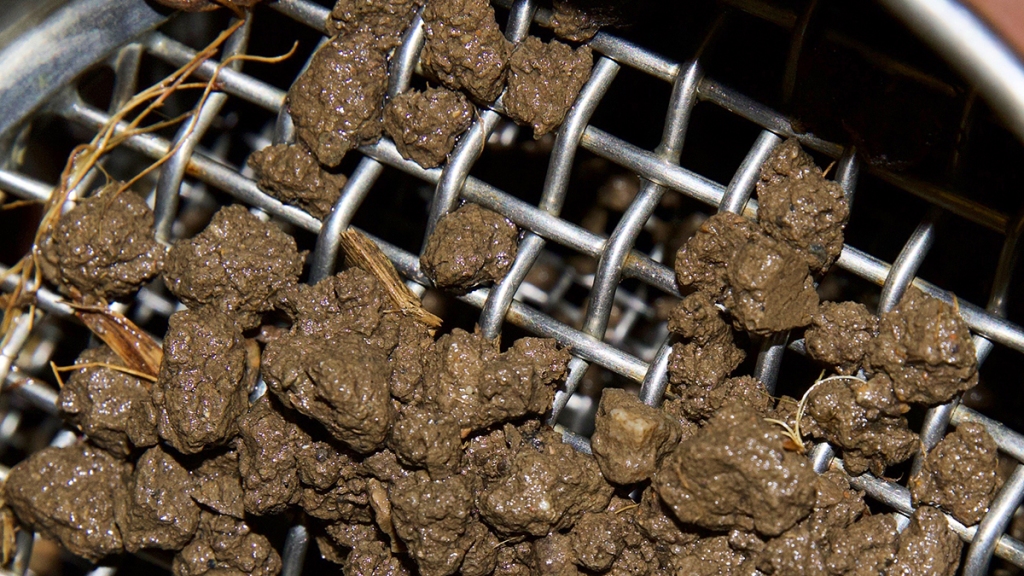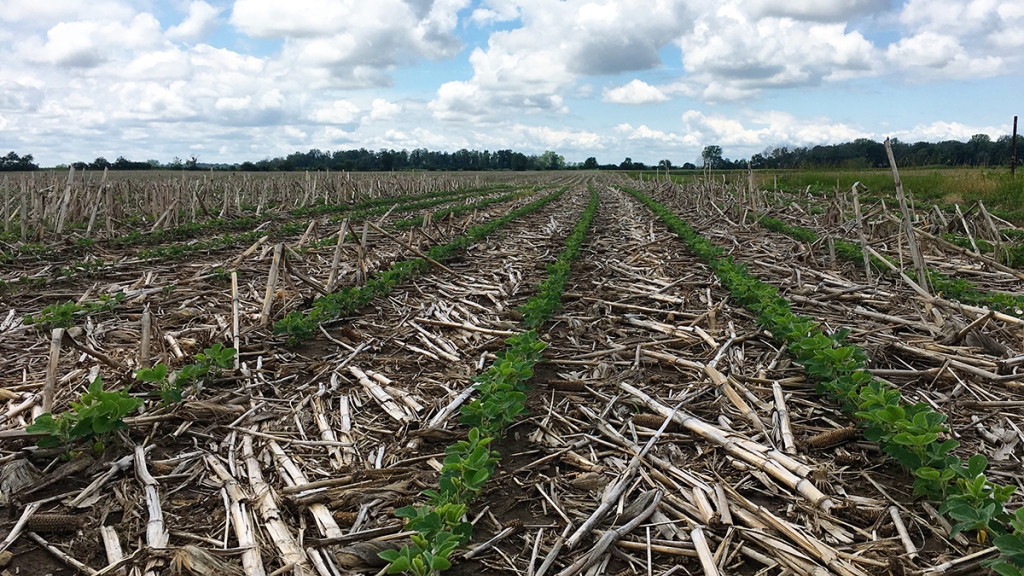The ground beneath your feet might seem like a uniform material, but it’s really a mixture of soil particles, organic matter, and other mineral/organic components. For a soil to be healthy, it must have good structure. Soil is made up of a combination of primary particles – sand, silt and clay. These particles can be bound together into what soil scientists call “aggregates.”

These aggregates are clumps of soil that range from the micro level (less than 0.25mm in diameter) to the macro level (greater than 0.25mm in diameter). Furthermore, they can resemble various shapes: granular, blocky, etc. These varied shapes allow for healthy soil to have pores spaces for air and water, needed for healthy plant growth.
Aggregate formation is a complex process. Soil aggregates are formed through physical, chemical and biological activity below ground. They are even influenced by human factors, like tilling, walking on the surface, or even how you fertilize your garden. Formation of aggregates begins with finer soil primary particles binding together. You may know that clay particles have a negative charge. And, the fertilizers you use include salts that have positively charged cations (things like potassium nitrate, etc.) The positively charged cations allow the negatively charged clay particles to bind together creating “floccules.” The type and amount of clay minerals in the soil often plays an influential role in aggregation formation.

The second part of aggregate formation deals with cementation. Here, the clay floccules and other soil particles are bonded together by some type of cementing agent. (Here we mean “binding” – not cement like in concrete!) Examples of cementing agents include organic matter, and liming materials like calcium carbonate. Even types of oxides, like iron and aluminum can help cement particles together.
In the case of organic matter, it is broken down by the soil microorganisms and soil fauna (earthworms, etc.) When breakdown occurs, these organisms secrete organic compounds that are the “glue” that makes cementation occur. Plant roots also play a role in aggregate formation by secreting organic compounds called root exudates. These help bind soil together near the root zone. Fungal hyphae also contribute to aggregate formation by entangling and weaving around soil particles.
As you can see, aggregate formation is the result of many interactions and feedback loops occurring below ground.
Soil aggregates play a major role in soil structure formation and soil health. In agriculture, the stability of aggregates is critical to how well an agroecosystem will function. The pore spaces in soil influence air and water storage, and gaseous exchange. They create habitat for soil microorganisms, and allow for plant root development and penetration. They also assist in nutrient cycling and transport.
Soils that have high aggregate stability are less susceptible to erosion. They hold their shape when exposed to disruptive forces, like water, and do not easily break apart.

Poorly aggregated soils disintegrate easily when exposed to erosive forces. They tend to break down faster, leading to soil degradation. Poor stability can lead to pore spaces being filled in and can ultimately result in the formation of soil crusts. This can lead to reduced infiltration and gaseous exchange. Poorly aggregated soils can reduce crop productivity.
Soil management often influences aggregate size, shape, and stability. Favorable practices that promote and maintain greater stability include:
- Minimizing soil disturbance, like minimal tillage. This reduces aggregate destruction because they are not physically or mechanically broken apart;
- Adding organic matter enhances aggregate strength and stability;
- Keeping soil covered is essential to keeping soil intact. Vegetative cover on the soil reduces the impact of erosive forces;
- Promoting a diverse cropping system. Systems that promote perennial plants or meadows have expansive rooting systems and require no tillage. Promoting this kind of diversity within a system will ensure that soil’s function is not reduced;
- Managing for grazing. Grasses have strong root systems, but if animals graze too long, that can be disruptive to the forage system. There are many ways to graze animals and preserve or enhance soil stability; and,
- Managing for pest control. The choice of plants and how they are managed (e.g., annual vs. perennial, cover crops, rotation) are highly influential.
To recap – soil aggregates are the building blocks that make up soil and their stability is extremely important in the long-term. Soils that are well aggregated exhibit greater soil health, ensure greater agronomic productivity, are less susceptible to soil erosion, and can play a role in carbon sequestration.
Answered by Nall I. Moonilall, Ohio State University
To receive notices about future blogs, be sure to subscribe to Soils Matter by clicking on the Follow button on the upper right! Explore more on our webpage About Soils. There you will find more information about Soil Basics, Community Gardens, Green Infrastructure, Green Roofs, Soil Contaminants, materials for Teachers and more.

Thanks for the outstanding description and photos of soil aggregation. Sometimes I tell people that the difference between good sandy loam soil and adobe bricks is aggregated soil structure.
I often wondered why granular aggregates are round. What forms the rounding process?
Good question. I suspect rounding is an artifact of cultivation and sampling. One main process that forms aggregates is drying and shrinkage which tends to make planar cracks. Other processes like root growth and animal tunneling could also make planar gaps, think of the effect of an ice pick, as well as holes. Maybe we should think of aggregates in situ more as rough cubes. Cultivation probably rounds aggregates by knocking off the corners.